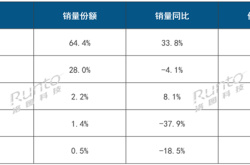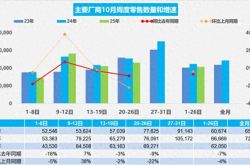RTX 50 Series Graphics Cards Now Available: Prices Skyrocket, Inventory Scarce – Is NVIDIA Facing a Production Capacity Crisis?
![]() 02/08 2025
02/08 2025
![]() 517
517
The RTX 50 series has finally hit the market, but the news isn't all good. The reason? They're sold out. As early as mid-January, rumors circulated that the initial batch of RTX 5090s would be scarce. However, their high price tag meant they were targeted only at a niche group of hardcore gamers, so the discussion didn't gain much traction.
As the release date approached, many self-media personalities and dealers revealed that not only the RTX 5090 but also the RTX 5080 were out of stock. This has left many gamers who were planning to upgrade their graphics cards anxious, especially those genuinely interested in purchasing the 5080. Seeing NVIDIA's official pricing of just 8,299 yuan, many were gearing up to buy them at launch.
In terms of performance, while the RTX 5080's AI computing power trails the RTX 4090, it can compete with it in gaming performance and other areas, and its price is only half (the latter's second-hand price on Xianyu is around 16,000 yuan). With the enhanced DLSS 4.0, the 5080 can even surpass the 4090, achieving high frame rates in 3A games at 4K resolution. Considering the reduced power consumption from new processes, it's highly attractive to gamers.
However, the severe shortage of RTX 50 series graphics cards has disrupted all gamers' plans.
Is this unprecedented shortage indicative of a production capacity crisis at NVIDIA?
If nothing unexpected happens, the RTX 50 series could be the most scarce generation during its launch period in years. Judging from dealers' online account reconciliations, NVIDIA has a very limited number of graphics cards available in each major market. Leading dealers only have a few hundred cards allocated, and others have single-digit allocations. The total number of RTX 50 series graphics cards across different brands and models may not even exceed three digits.

Image source: Lei Technology
Calculating this way, even in China, the largest single market, the estimated overall number of cards available does not exceed 10,000. In fact, insiders have revealed that the entire Chinese market has only received a quota of a few thousand RTX 50 series graphics cards, most of which are RTX 5080s, but they're still "too few for too many" given the national demand.
If RTX 5080 is in such a situation, RTX 5090 is even more so. According to channel information, there may be less than three digits of RTX 5090Ds nationwide, and most have already been pre-ordered by corporate customers. Only a few lucky ones have been able to buy graphics cards directly from channel distributors. For spot goods, the only option is to pay extra. The current market situation is that prices are generally increased by 8,000-10,000 yuan (for the D version). For the non-D version, the price has doubled to around 30,000 yuan.
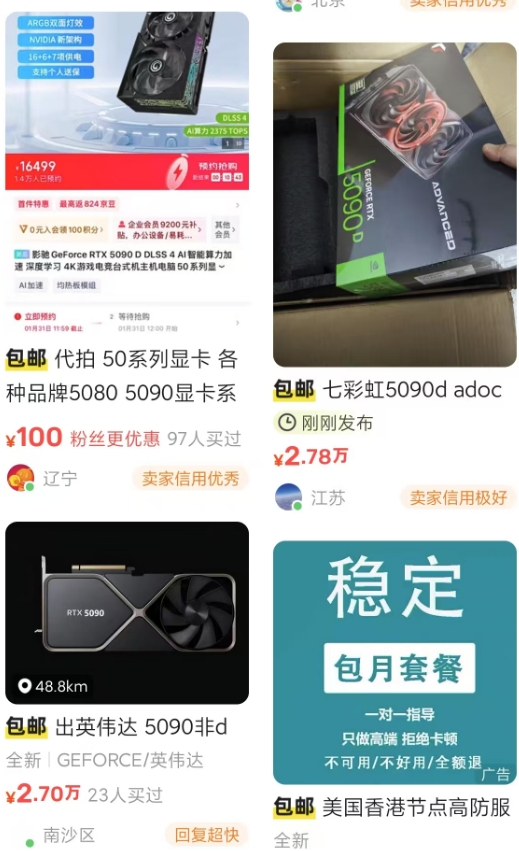
Image source: Lei Technology
While NVIDIA's new graphics cards have been in short supply and required price hikes during initial launch stages in the past, such a significant increase this year is unprecedented, reminiscent of the "one card hard to find" situation during the mining boom. However, during the mining boom, the supply of graphics cards wasn't actually low. It was the strong demand and lucrative returns from virtual currencies, combined with capital intervention, that drove up prices. Coupled with factors like the pandemic, graphics card prices eventually doubled.
In fact, during subsequent smaller mining booms, although graphics card manufacturers tried to replicate similar price hikes, they all failed. From the price trend of graphics cards over the past year, it's evident that supply and demand in the entire PC market have returned to normal. Except for the RTX 4090, which rose against the trend for certain reasons, the prices of graphics cards like the RTX 4080 have been steadily declining until the RTX 50 series entered the market.
According to internet rumors, the 50 series graphics cards are in short supply globally, not just in the Chinese market. Even in the United States, NVIDIA's home base, the core reason for the shortage is that NVIDIA's supply falls far short of previous years. Over the past few months, rumors of NVIDIA's insufficient production capacity have been circulating. Currently, TSMC's production capacity cannot meet all of NVIDIA's supply demands.
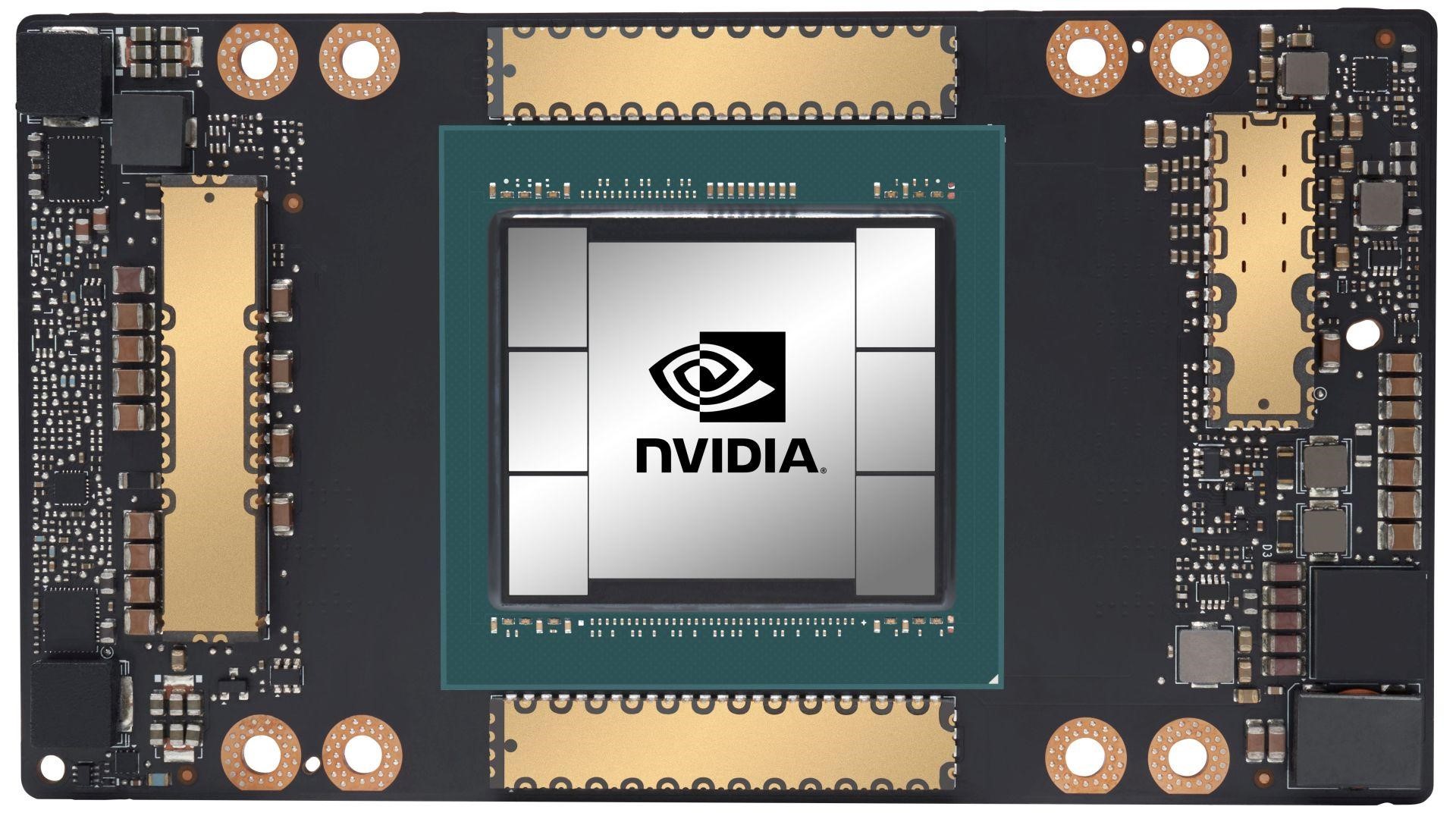
Image source: NVIDIA
To ensure revenue, NVIDIA has chosen to allocate most of its production capacity to higher-margin professional graphics cards, namely AI computing cards, directly affecting the stock of consumer-grade graphics cards. To alleviate supply pressure, NVIDIA once hoped that Samsung could take over part of the graphics chip manufacturing, but industry feedback indicates that Samsung's yield rate and final performance haven't met NVIDIA's requirements.
With TSMC's production capacity saturated and no second manufacturer able to take over chip manufacturing, it's highly likely that NVIDIA's graphics card supply shortage won't be resolved in the short term. In fact, based on the information I have, the supply in the entire consumer graphics card market may not gradually return to normal until April. Before then, both RTX 5080 and RTX 5090 will continue to be in short supply and hard to find.
The shortage of the 50 series has not only led to a surge in new card prices but also disrupted the downward trend of 40 series graphics card prices. Coupled with the fact that the 40 series has been discontinued and the supply of the 50 series hasn't caught up, the prices of graphics cards like the RTX 4090 have further increased, making last year's Double 11 and year-end sales the best time to buy new graphics cards.
For most ordinary gamers, now isn't the best time to buy graphics cards.
The RTX 50 series has been tested – which one is the best buy?
Currently, the actual test data for both RTX 5090 and RTX 5080 have been released. Honestly, the overall performance is in line with expectations. Among them, the RTX 5090's native ray tracing performance is 30% higher than its predecessor, and with the support of DLSS 4.0, it can even achieve double the frame rate performance, directly satisfying the demand for high frame rate gaming at 4K maximum graphics settings with ray tracing fully enabled.
From actual tests, the RTX 5090's gaming performance is indeed far ahead. For gamers aiming for the ultimate gaming experience, the RTX 5090 is the only choice. Even without considering the support of DLSS, the RTX 5090 also has the largest increase in physical performance among the 50 series graphics cards. Of course, this also includes AI computing power, far surpassing the previous-generation RTX 4090 (only the 5090D is available in China, with severely limited computing power).

Image source: NVIDIA
However, the RTX 5090 is also the model with the largest price increase in the 50 series. Considering the overall performance improvement and official pricing, it's actually the least cost-effective choice. Given that the current price of the RTX 5090 has almost doubled, I don't recommend any ordinary gamers to purchase it. It will only be a suitable time to buy when supply stabilizes and the price drops below 20,000 yuan.
As for the RTX 5080, which is more concerned by ordinary gamers, its overall cost-effectiveness isn't high either. From the actual test results, its actual performance improvement is around 15% (compared to the RTX 4080). Moreover, there's no significant upgrade in video memory compared to the previous generation, so the improvement in AI performance is mainly concentrated at the computing power level and still cannot meet the local deployment requirements of large-parameter AI models (insufficient video memory).
In other words, compared to the RTX 5090, which excels in both gaming and AI, the RTX 5080 is actually a more pure gaming graphics card. However, its 16GB of video memory also limits its usage experience in scenarios like 4K resolution, posing a certain risk of video memory explosion.
Nevertheless, considering that the RTX 5080's actual gaming performance is close to that of the RTX 4090, if it can be purchased at a price of 8,500-9,000 yuan, its cost-effectiveness is still good from a gaming perspective. If you're buying a graphics card for AI, the RTX 5080's overall performance is more suitable for large painting models like Stable Diffusion, and 16GB can just meet the deployment requirements of most models, with significantly faster inference speeds compared to the previous-generation 40 series graphics cards.
Of course, the current spot prices of the RTX 5080 mostly exceed 10,000 yuan, which isn't worth buying at this price. After all, from a product positioning perspective, this graphics card doesn't have high "commercial value" and won't become a target for speculation like the RTX 5090. After the supply of graphics cards stabilizes, the price of the RTX 5080 should stabilize at around 9,000 yuan, and some budget versions (lowest configuration versions) should be close to the official pricing.
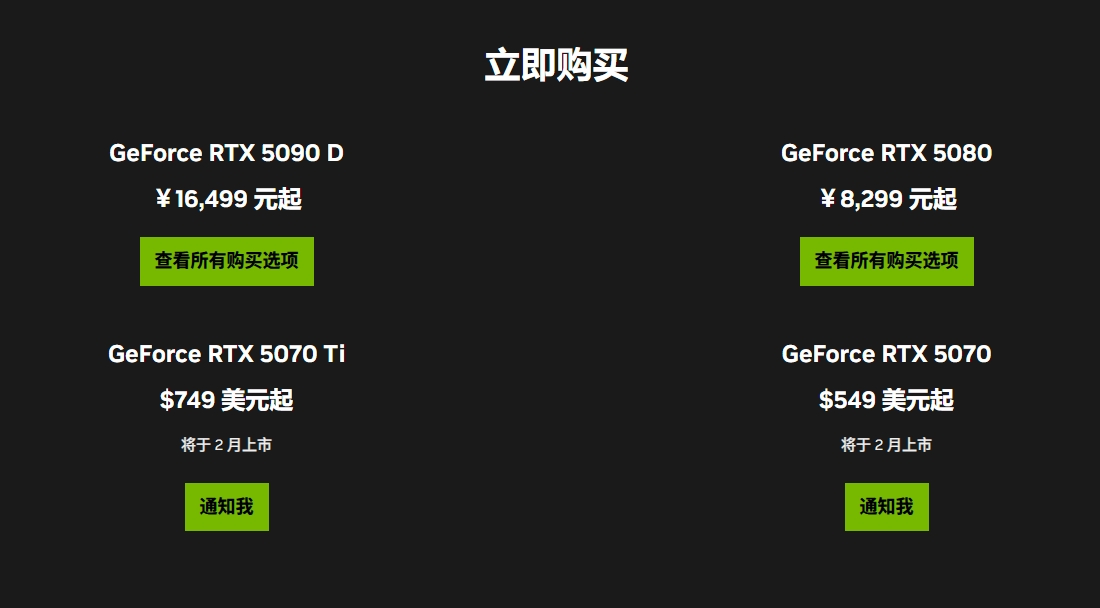
Image source: NVIDIA
However, I also don't recommend choosing budget versions blindly for a lower price because, from actual test results, the RTX 5080 has good overclocking potential. With powerful hardware materials, its actual physical performance after overclocking (without enabling DLSS) is almost on par with the RTX 4090D, which is a pleasant surprise.
Nevertheless, I still suggest that you might as well wait for the RTX 5070/5070 Ti. These two graphics cards should target the performance requirements of top-tier 2K and standard 4K respectively. The RTX 5070 Ti's 16GB of video memory just meets the needs of 4K gaming, and its core performance also just reaches the threshold. In comparison, although the previous-generation RTX 4070 Ti Super also has 16GB of video memory, its core performance makes it unable to meet the gaming rendering requirements at 4K resolution, making it an AI-specialized card.
Moreover, considering that the stable supply of 50 series graphics cards won't be available until at least April, by then, the RTX 5070 series will already be on the market, which will also alleviate the shortage and price increase of the 50 series to some extent.
If you don't want to wait and need to buy a graphics card now, there are still ways. On platforms like Xianyu, you can usually buy spot goods by paying extra, but the prices for spot goods are also very high. Those with relatively lower prices are "futures."
To be honest, I don't recommend buying "futures" on Xianyu because many buyers who have pre-ordered 50 series graphics cards have been scammed recently (sellers require early confirmation due to capital turnover or other reasons, otherwise, they will cancel the order). When you can't determine if the other party is reliable, the risk is very high.
Currently, the most reliable method is to entrust friends to purchase on your behalf. If you have friends who plan to travel to Hong Kong, China, Singapore, Japan, or other places in the near future, entrusting them to purchase on your behalf is also an option. Although the prices are also inflated, it's easier to buy spot goods.
In addition, some major UPs on Bilibili also provide pre-orders, which are more credible than Xianyu sellers. However, it's relatively more difficult to snatch graphics cards, and you often need to wait in line for goods, so the timeliness is also difficult to guarantee. Besides that, the only option is to keep an eye on platforms like JD.com and snatch graphics cards based on your speed. Starting from mid-February, the number of goods released should gradually increase.
In short, I suggest that you wait a bit longer and buy after the prices stabilize. After all, graphics cards aren't a necessity of life. Even if your new computer urgently needs a graphics card, you can temporarily choose to buy a second-hand one. Graphics cards like RTX 3070 and RTX 3080 are good choices. Not only do they have sufficient performance to meet 2K and 4K gaming demands, but their current second-hand prices are stable. You won't lose too much if you sell them later after purchasing a 50 series graphics card.
Source: Lei Technology

